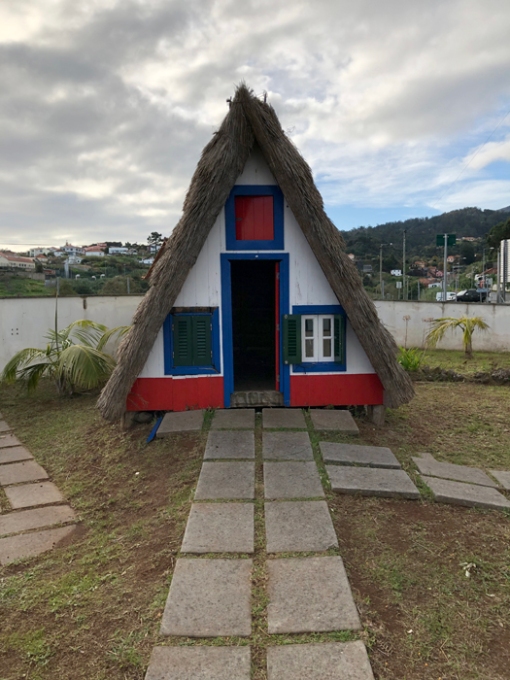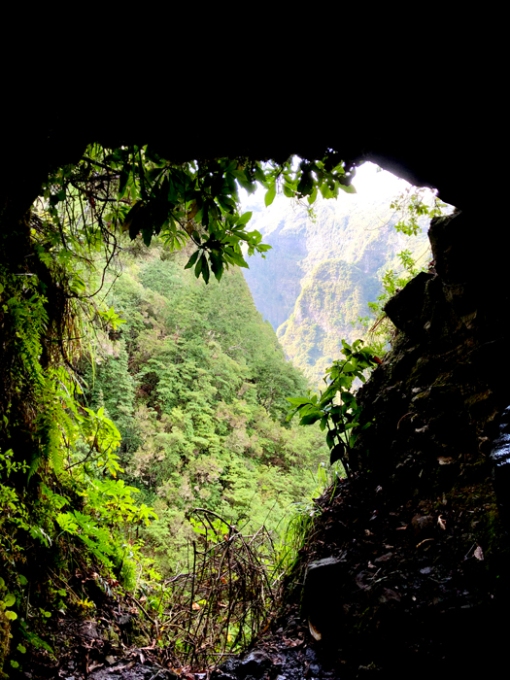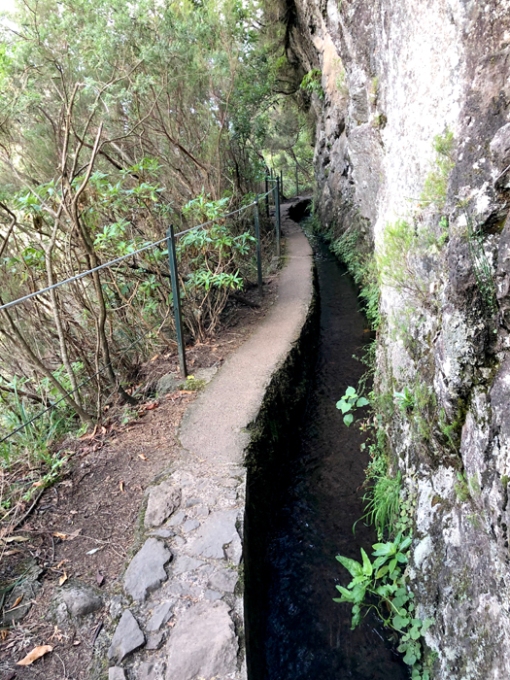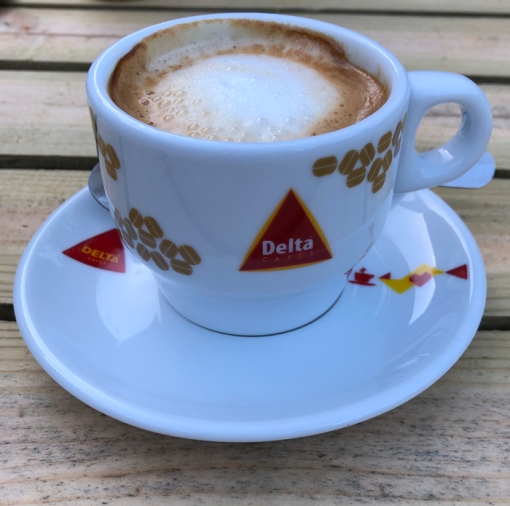One of the things I looked forward to in Madeira was levada walking. I’d read about it in the guide books and on the second day we went to Tourist Information to try and book a tour. They directed us to their preferred company who had two offices in the old town. Unfortunately both offices were closed but the old town is picturesque and we enjoyed wandering the streets until somebody reappeared in one or other office.
We were assured that the walk we had chosen, although thirteen and a half kilometers long, was only moderately difficult and the end destination was only a hundred metres higher than the start point, so there would be very little climbing involved. We were also told that the company specialised in small groups of two to six people. Arrangements were made for the mini-bus to collect us outside our apartment at eight o’clock the following morning.
We were somewhat taken aback when a full sized bus appeared. There were only two people on board but the driver told us that it was a larger group than usual. We spent the next hour driving through narrow, often steep streets to the various pick up points until all sixteen people, plus the local guide were on board.

The walk was in the mountainous region at the northern side of the island so we didn’t arrive at the starting point until late morning. The bus stopped a kilometer from the start point because it couldn’t climb the steep gradients on the final leg with the load caused by such a large group.
We’d booked an English tour but the majority of the group were German and that is the language the guide used for most of the day. As soon as we alighted from the bus, one group immediately set off at a quick march leaving the rest of us behind. They were waiting at the official start and there was a brief talk in German then they speeded off again.
It wasn’t our intention to reach the end in record time, so we went at our own speed. The guide managed to spend time with everyone on this straggling line of walkers but seemed slightly puzzled and irritated by the speed of the leading group. Whilst walking with us he told us that at certain times of the year, locals came to the levadas and cut sticks from Lily of the Valley trees to sell to walkers. They use this wood because it is strong but very light, and he pointed out a lily of the valley tree. I know the plant and used to have some in my garden, but didn’t know there was a variety that grew into a tree. He also pointed out a heather tree, another plant I hadn’t realised could grow to that size.
The beginning of the walk was fairly flat and along wide, leaf-cover tracks but it soon deteriorated into much narrower paths that twisted their way up and down over the rock-strewn, rough terrain. Although harder than we had expected or been led to believe, it was manageable.
We’d been told to take torches and discovered why when the track suddenly stopped at the mouth of a dark tunnel. The path had been cut through the rock of the mountain and we were plunged into darkness. It wasn’t very high and had an uneven roof so we had to crouch over and watch for protruding rocks as well as contend with an uneven surface, mostly covered in water and very slippery, underfoot. Part way along the first tunnel there was a hole and we had a wonderful view of the valley falling below and mountains soaring above opposite where we stood. It made me realise that above us was a solid mass of rock, which was quite disconcerting.

The last third of the walk proved much more challenging because the levada had been carved out of the side of a pretty sheer mountain side. We had to walk for miles along the narrow concrete top of the levada wall. There was a fence made of metal post driven into the rock with two wires strung along them, but most of the posts were wobbling and unsafe and some were literally hanging in mid air with only the wires keeping them in place. It was along this section that we met the most people coming in the opposite direction and allowing each person to pass required difficult balancing efforts as one person had to lean into the rocks over the levada while the other person leant out over the sheer drop.

I didn’t enjoy this part of the walk at all. Having to place each step carefully, one in front of the other, required lots of concentration and I was more than ready for a break when we finally got to the end.
We had a half hour break, sitting on large rocks at the bottom of what would be a huge waterfall when it rained before having to retrace our steps for the homeward journey.

Recent Comments